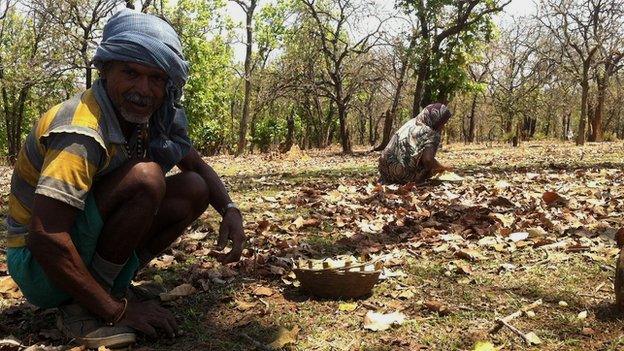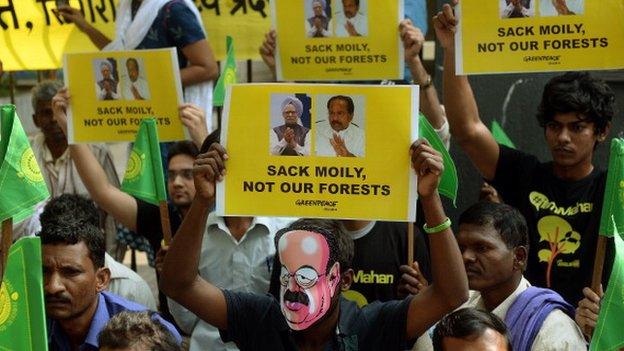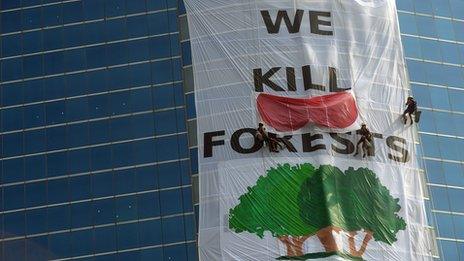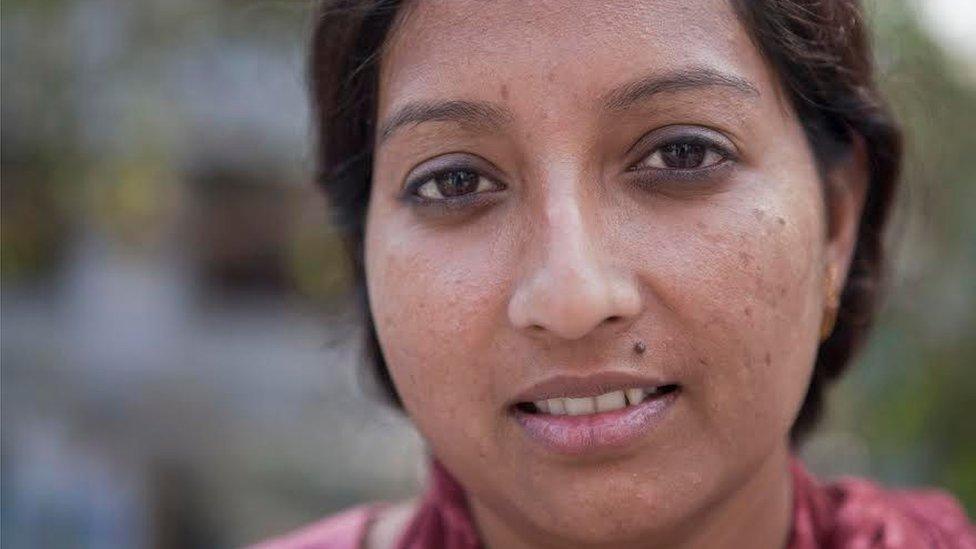How tribal Indians beat big coal firms
- Published

The villagers of Mahan managed to prevent their land from being mined for coal
India's government wants to make the country a manufacturing hub - but for that it needs to increase power production. The villagers of Mahan, helped by Greenpeace, recently blocked attempts to mine coal in their forest. Sanjoy Majumder reports.
"This is the land of our ancestors, we will never give it up - we'll never leave our forest," sing a group of villagers.
The villagers of Mahan in Madhya Pradesh state are celebrating a hard fought victory.
In March they managed to prevent their land and the adjoining forest from being mined for coal by two of India's leading energy companies.
It was a campaign that lasted two years with the help of the international environmental pressure group, Greenpeace.
"Our livelihood would have gone. What would we have eaten?" says Kanti Singh Khairwar.
"The company would have uprooted the entire forest. We would have died."
Lifeline for villagers
The Mahan forest, which adjoins the village, is one of the oldest in this part of India, stretching across three states.
It is the villagers' lifeline. The Mahua flower which grows on the indigenous Sal trees is an invaluable resource which has supported local communities for centuries.
As you enter the forest early in the morning, groups of villages crouch around picking up what look like yellow berries.

Many villagers in Mahan depend on the forest for their livelihood
"We will dry these, they are seeds of the Mahua flower," one of them tells me.
"Then we will cook and eat them. And if we need to, we'll sell them."
The seeds can also be used to produce oil, medicines, even alcohol.
A kilo can fetch up to 30 cents in the local market, a not insignificant sum in a region that is extremely poor.
Fifteen thousand people spread over more than 50 villages depend on the Mahan forest for their daily needs as well as their income.
So its potential destruction is seen as devastating for the local economy.
But the forest hides another, critical resource.
Desperate need
Patches of the ground are covered in dry, blackened rock. Under the surface are rich reserves of coal.
It's part of massive deposits that stretch along a large part of eastern India. And the country desperately needs it.
Two of India's biggest energy companies had initially won a bid to start digging for coal here.

The tribespeople of Mahan were helped in their campaign by Greenpeace
But the villagers, helped by Greenpeace, resisted the move.
"The forest gives us food, water, medicine and also is our only source of income," says Bechanlal Shah, one of the leaders of the protest.
"That's why we poor people completely depend on it."
The villagers were promised help to relocate, and even jobs, but they refused.
"The company says it'll give us jobs. But only one person from each household will be employed.
"The forest, on the other hand, sustains the entire family."
Idle power plant
There's been one immediate consequence of the villagers' resistance.
Looming over the village, clearly visible in the distance, is the power plant belonging to the Essar company, which lost the coal mining bid.

Following protests, Essar lost its coal mining bid in central India
But no smoke is billowing out of its tall chimney. With no coal available, it's idle and not producing any electricity.
It is one of several private power plants being built across India, part of the government's drive to address India's growing energy needs.
"The average Indian has access to about 1,000 units of electricity compared to the global average of about 4,000," says Arunabha Ghosh of the Delhi-based think tank, Council for Energy, Environment and Water.
"Even if we have to meet basic needs, over the next 10 years we have to be electrifying more than 750 households every hour. That's going to be the driver of human development and economic growth."
India has ambitions to become a global industrial power, one that can rival China and for this it clearly needs to increase its energy production.
It has a fifth of the world's coal reserves - enough to meet its needs.
But much of it lies under rural communities such as in Mahan - and for many, the cost of digging it up is unacceptable.
It's a conflict that the government is still struggling to resolve.
- Published10 April 2015
- Published9 April 2015

- Published4 September 2012

- Published12 March 2015
